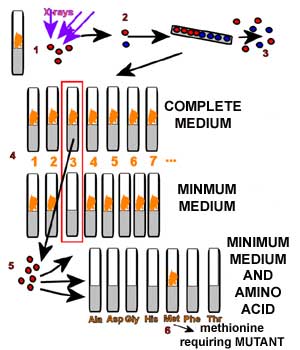|
History of the process of
|
Gregor Mendel 1860 - laid the foundation of modern genetics
with his studies of pea plants, specifically: how
various traits could be passed on through the generations
 Traits (phenotypes) are the manifestation of genotypes. The genes are a code for proteins that generate the traits. Many of the traits that we think of are obvious to the eye such as height hair colour etc. but most are invisible and are working within each cell as they have for billions of years. Proteins are enzymes, structural elements, motile units, antibodies, hormones. These various types of proteins create the living cell and its metabolic nature. Archibald Garrod 1900 - as a physician he noticed that certain families had  inherited
diseases inherited
diseases- he hypothesized that certain diseases could be the result of a metabolic pathway error - assuming each step in a metabolic pathway is mediated by an enzyme, then if one enzyme in the pathway was defective in some way then this could create a metabolic disease - if an enzyme is a protein and proteins are inherited then a gene might be responsible for producing a protein - studied the disease alkaptonuria (people with the defective alkapton-metabolizing gene accumulated alkapton and excreted the surplus in their urine)  Beadle and Tatum " ONE GENE ONE PROTEIN " details - 1930 - irradiated molds (red bread mold) to create metabolic mutations that would not grow on minimal nutrient culture plates - normally the red bread molds could produce all their amino acids if in a nutrient rich culture plate - by isolating molds that could only grow in minimal cultures with a specific nutrient they determined metabolic pathways and the defective genes that produced the required molecule that was needed in the minimal broth - showed specific gene affects specific metabolic reaction " one gene one protein" Vernon Ingram - 1955 while studying sickle cell anemia found that if the hemoglobin gene had the codon for glutamic acid substituted for valine then this simple base-substitution (on the beta chain of hemoglobin) could produce sickle cell anemia in the person possessing the alternate gene next >>>>>> |